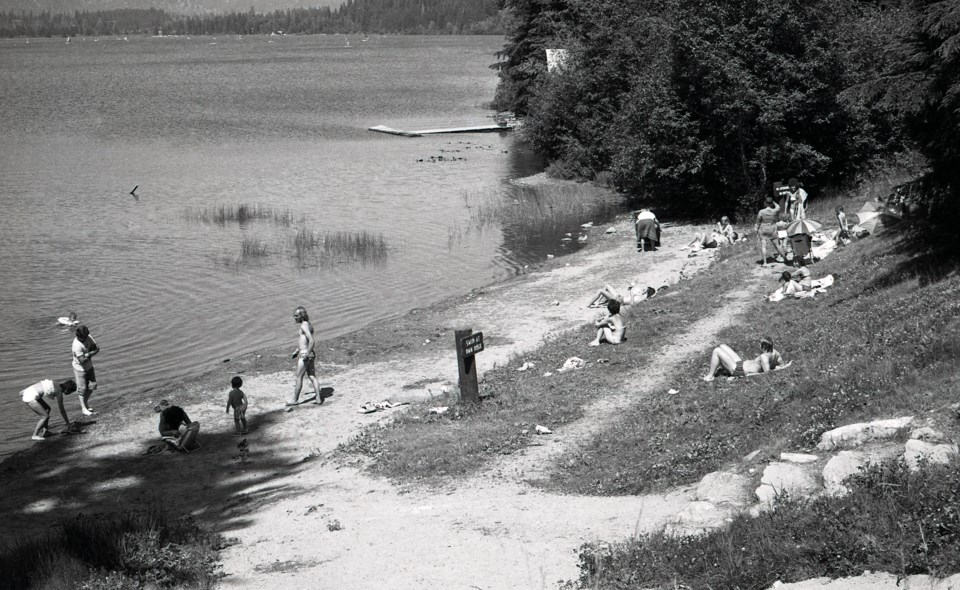Much of Whistler’s magic comes from the swathe of recreational green space that we enjoy within municipal boundaries. For this, we can thank the visionary thinking that started a Recreation Plan for Whistler, before Whistler Village even existed.
The value of recreational green space was not underestimated in Whistler even before the municipality was created. A community study by W.J. Blakely in 1973 stated, “The acquisition, either through direct purchase or as a condition of approval of development, of public open space and lakefront land for community recreation should be undertaken as soon as possible on behalf of any new municipality incorporated.”
The Resort Municipality of Whistler (RMOW) was incorporated in September 1975, and despite the many tasks facing resort officials, a provisional Recreation Plan was written by 1976. “Recreation and Open Space Considerations for Community Planning” was prepared for the RMOW by Norm Paterson representing the Whistler Developers Association, Paul Burrows representing the Alta Lake Rate Payers Association, Paul Mathews from the Advisory Planning Commission and Councillor Al Raine.
This report recognized that, “Recreation is the primary resource of the Whistler Community and this important asset must be protected and optimized for the benefit of the Whistler Community.” The report also noted that, while the ski season was the prime driver of the economy in Whistler, the summer economy should not be overlooked.
Analyzing recreational potential in Whistler, the report recommended investment into most recreational opportunities except for hunting, target shooting and ski-jumping. Hunting and target shooting were recognized as too noisy and in conflict with Whistler’s other recreational opportunities, while ski-jumping was not an economically viable investment for the RMOW, although private investment would be supported.
In the 1970s, Wayside Park on Alta Lake was one of the few designated parks in Whistler, as it had previously been a provincial park. Apart from this, public access to Whistler’s lakes was limited. “The areas of active water-related recreation should be developed as quickly as possible,” the report noted. “The present priority would appear to be public beach access to Alta Lake and boat launching areas. The development of Lost Lake is also important.”
In his copy of the planning document, Trevor Roote, who became the chair of the Advisory Parks and Recreation Commission (APRC), circled this paragraph and wrote “agreed.”
Roote and the APRC expanded on this preliminary planning document to create the original Recreation Master Plan. The plan was constructed largely by volunteers before there was a recreation department at municipal hall. It proposed locations for parks with a linear spine of trails to connect them. Doug Wiley, municipal engineer in the days when the parks person came under engineering, remembered volunteer Roote standing by his desk for hours going over their proposal.
The plan was detailed and thorough. It is quite incredible comparing the highlighted and hand-drawn maps from more than 40 years ago to the system of parks and trails we enjoy today. There are a few linkages still to be connected in Whistler’s Valley Trail system, notably between Alpha Lake Park and Function Junction, and from Mons to Whistler Cay. Other proposals that were not realized include the trail following the railway tracks on the west side of Alta Lake, south of Rainbow Park. On this section today, pedestrians and cyclists are required to share the road with vehicles often speeding along Alta Lake Road. Apart from that, development has stayed surprisingly close to the original plan.
Following the creation of the Master Plan, the land still needed to be acquired and the parks and trails developed. Whistler saw a period of rapid recreational development in the early 1980s. Lost Lake came first, followed by Meadow Park, Lakeside Park and Alpha Lake Park. This is not to mention many smaller local parks and facilities.
The Whistler Museum will explore many interesting stories this spring through its series, Creating Whistler’s Parks. Keep an eye out for these to hear about the municipality’s longest lawsuit, and how the Emerald Forest is related to hotels in the Blackcomb Benchlands.




